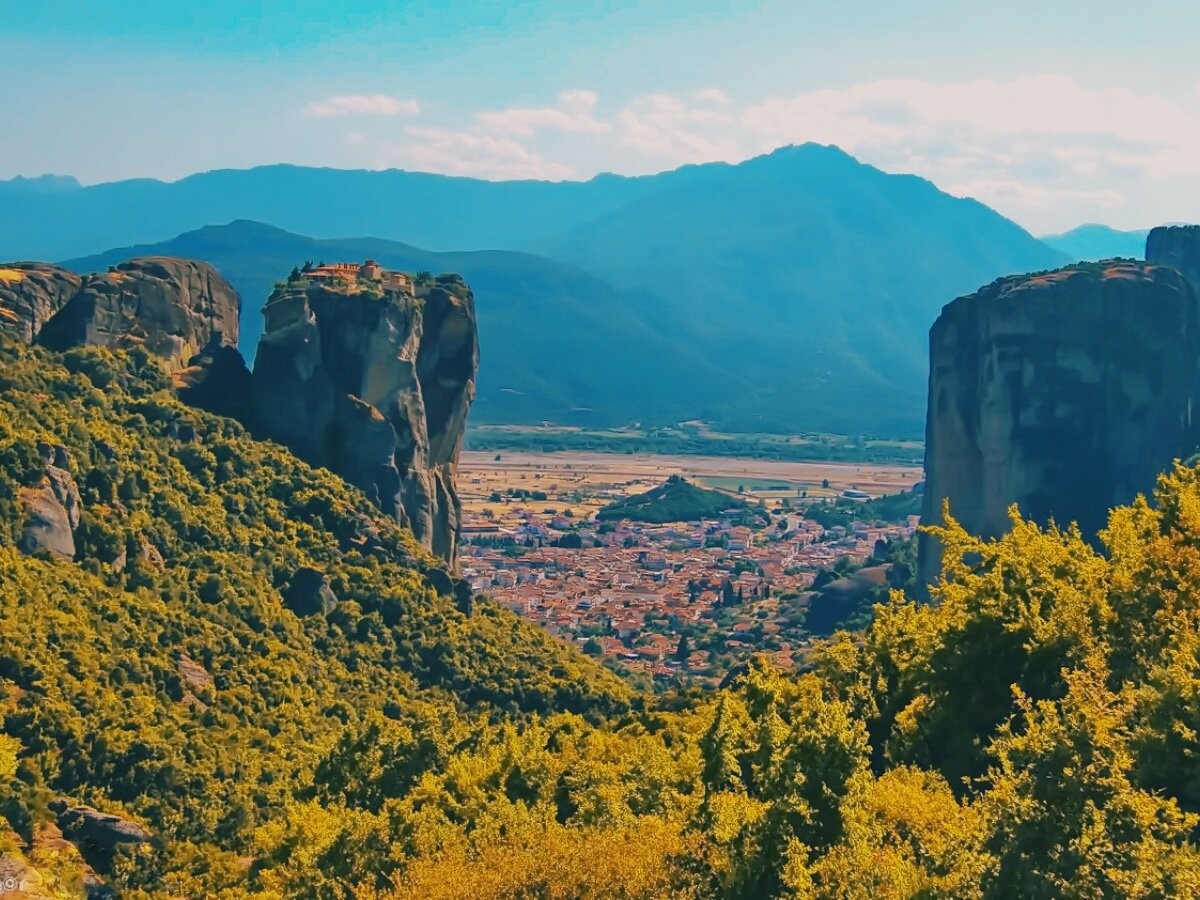Why are the monasteries on the Greek rocks called Meteora, where did they come from and how did the monks climb up (8 photos)
These six Orthodox monasteries, which are located on rocks at an altitude of 600 meters above sea level, are located in several kilometers from the Greek city of Kalambaka. It is believed that the rocks themselves for over 60 million years. And the first mention of rock monasteries appeared in the 10th century. 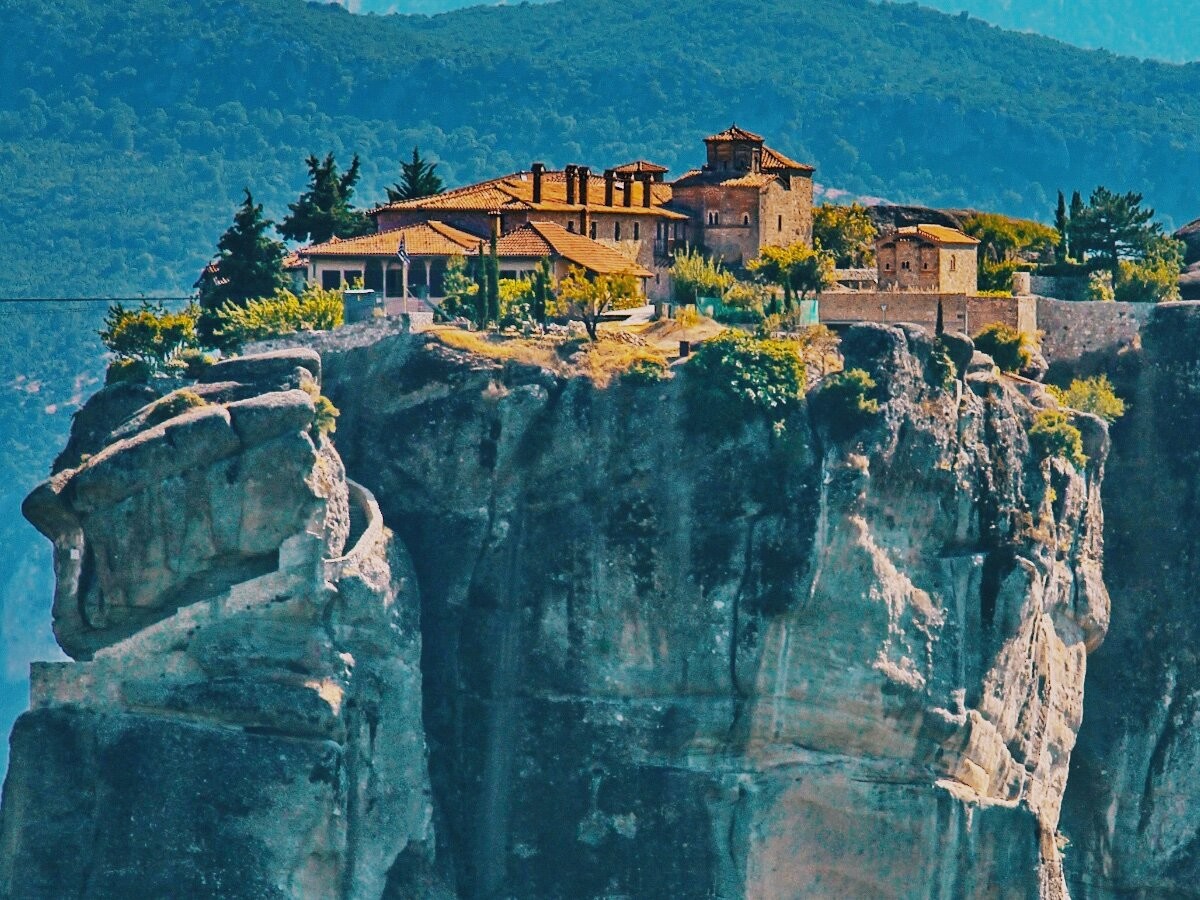
Throughout the history of this unusual monastery complex in Greece there were 24 monasteries - this is all over the mountain complex. Some of them are still preserved, but already in the form ruins. The first hermit monks settled in rock caves, and at the top of the rocks arranged special places for prayers.
In such hard-to-reach places, hermits could hide not only from annoying locals with their constant requests and questions, but also from their political persecutors, who in all there were plenty of times. 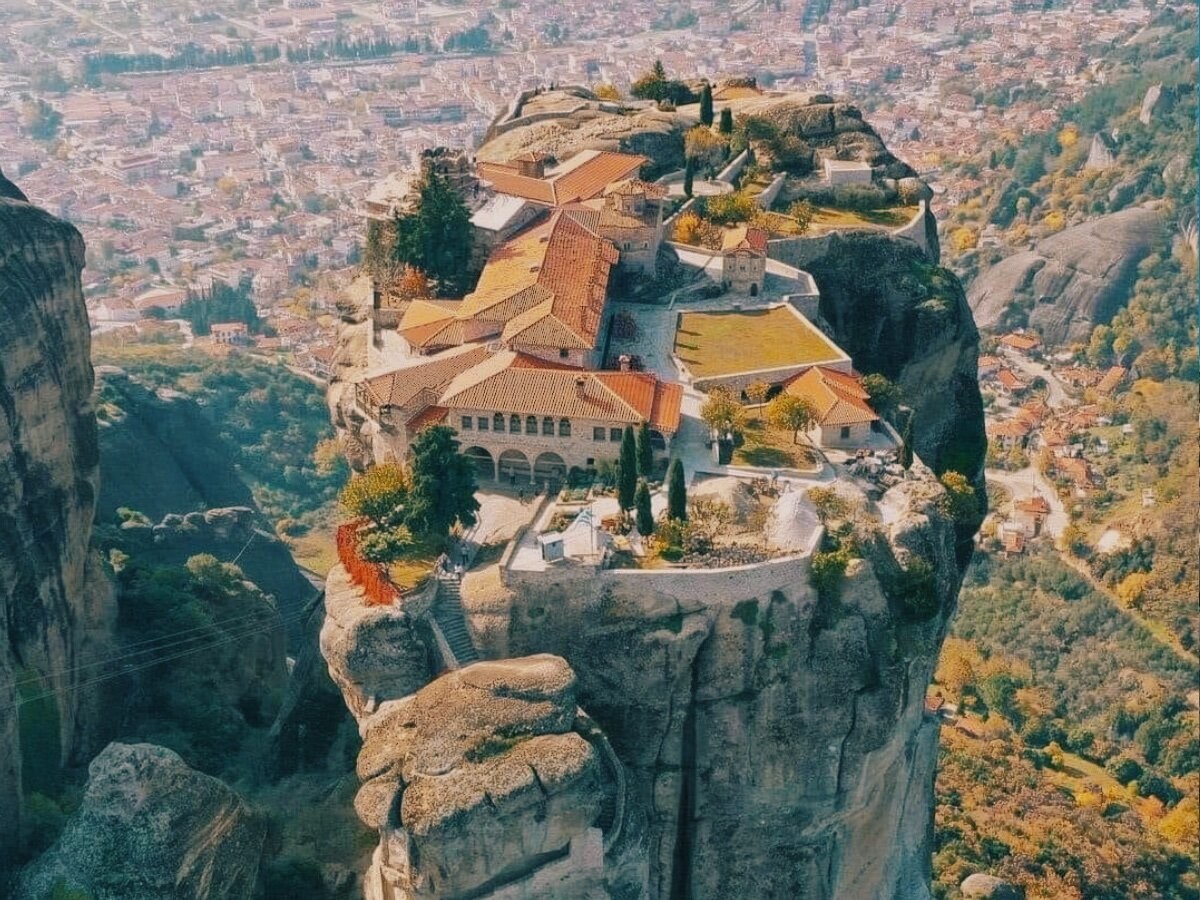
Actually, the fact that monasteries are more now, they are indebted to a monk named Athanasius, who in 1334 arrived here, having been expelled from Mount Athos during the invasion corsairs. By the way, it was Athanasius who then gave the name to these rocks. Meteora, which means "soaring in the air."
Under the leadership of the future Athanasius Meteorsky, how he became to call later, the first monastery appeared here, the life of which was organized in the likeness of Athos. 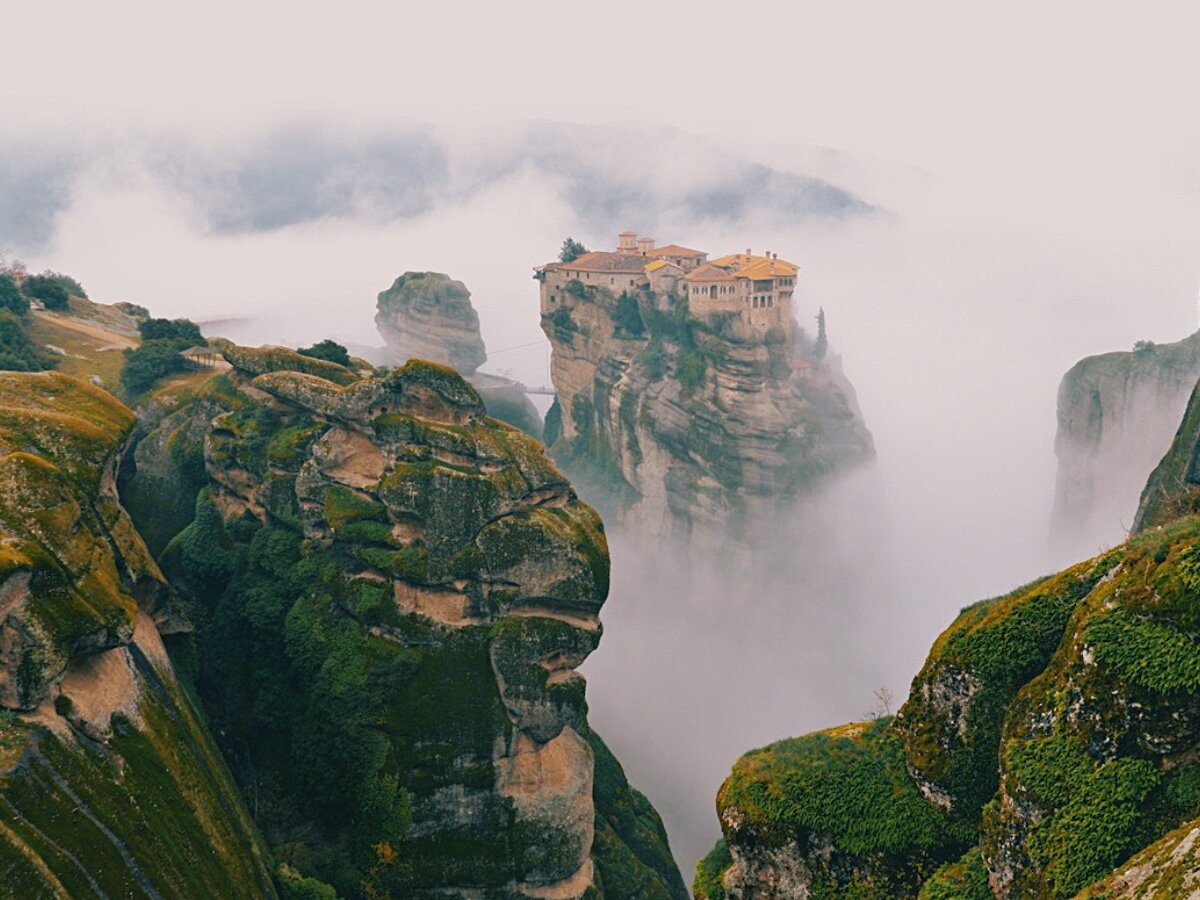
It is no coincidence that Meteors are now considered (and have been for a very long time) one of the two main centers of Orthodox monasticism in Greece - along with Athos.
The heyday of the monasteries came in the 16th century - it was then that on different rocks (they have their own names, by the way - for example, "Pillar of Drops" and "Wide stone") there were a maximum of monasteries, those same 24 names, from of which, as we have already said, there are only six or four left today male and two female monasteries. 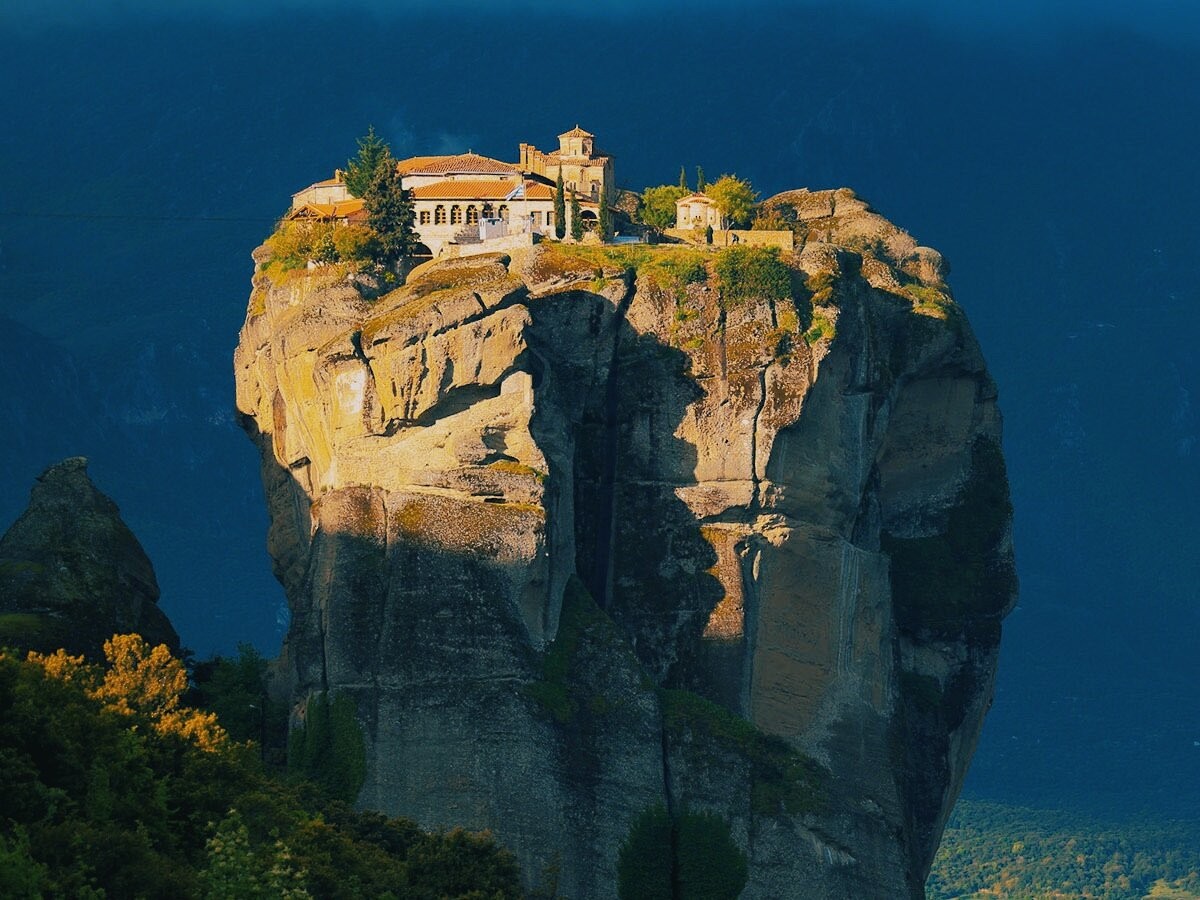
But if in the 16th century the absence of problems for monks was explained as once the monasteries were inaccessible, then in the 20th century this did not help. The monasteries were plundered by the German and Italian occupation troops during World War II.
So after that, the main concern of the monks was the restoration at least part of the monasteries. As you already understood, it was possible to restore a quarter of them. After some time, Meteors began to attract pilgrims and ordinary tourists. 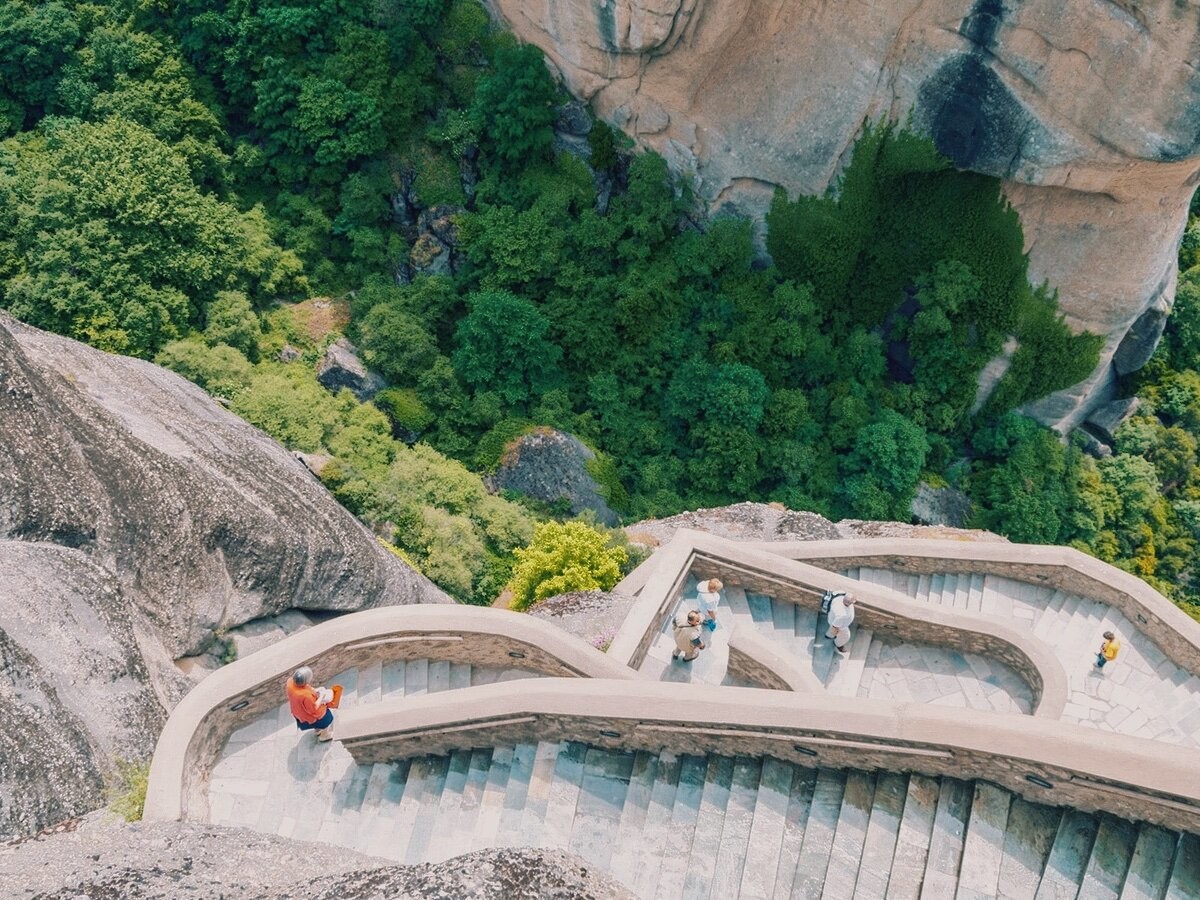
Impressive here is not only the view of the rocks and built on them buildings, but also the decoration of monasteries, old frescoes and even well-maintained courtyards with an abundance of greenery. The main question is how was built at such a height and how do you get up here?
If now tourists climb comfortable monolithic steps, carved into the rocks - this was done only in the 20s of the past century. And also with the help of devices like "funiculars" (although looks risky, of course). 
And once there were only hinged wooden stairs and nets on ropes, which the monks pulled up, thus lifting not only all kinds of objects, but also each other.
Even earlier, climbing the mountains was provided by those installed in crevices. scaffolding - just like now at construction sites. Climb up it took at least half an hour, and after all, in addition to themselves, it was necessary to raise food, water, building materials and even soil upstairs - originally rocks were naked. 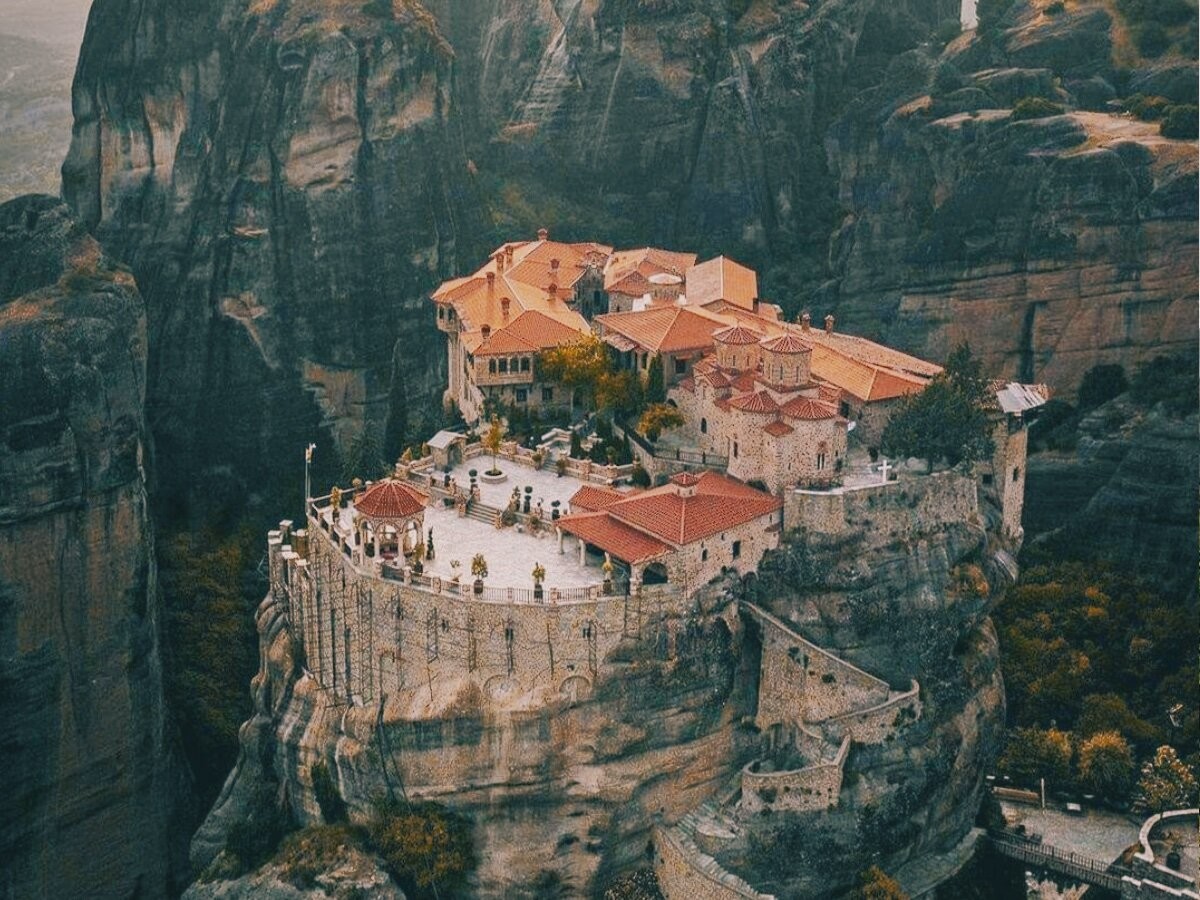
And now, you see, there is a lot of greenery in the courtyards of the monasteries; comfortable stairs, and indeed, beauty and in a sense even comfort and convenient car parking near all viewing platforms.
But, perhaps, we can say that people are attracted here not so many unusual views, namely an amazing combination - an unusual natural landscape, which, it would seem, is simply must turn out to be lifeless, and, in fact, the life that flows here is already many centuries. Perhaps this can be considered a symbol of faith and perseverance. 